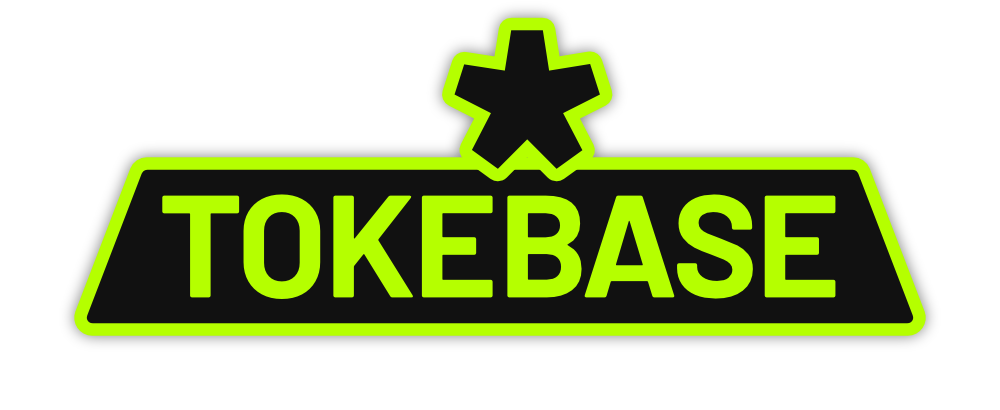Last summer, The Last Degen: Surviving a New Dynasty highlighted the change in crypto from the isolated ecosystem it had once been into a space infiltrated by bloodthirsty invaders. The outside world had reached crypto’s shores, and the impact of these growing connections greatly altered the trajectory of what was once a much more intimate space.
The collapse of centralized custodians, TradFi players, crypto natives, and even entire blockchains through the abuse of leverage erased a majority of the value in DeFi and made for a dramatic crescendo that marked the end of the bull market.
Much like the Daimyo of Japan, after the consequences of these foreign entities were felt, DeFi recoiled. The Three Arrows Capital (3AC) contagion struck the space hard and the cry of “code is law” echoed loud as DeFi OGs like Maker, AAVE, and Compound managed to perform and survive the volatility that TradFi and CEX entities couldn’t. With DeFi, either you were liquidated or you weren’t – it was that simple. 3AC, Celsius, and other TradFi entities are still undergoing legal battles over the little capital that is salvageable. To reduce their damaging influence, DeFi quickly returned to its rallying cry of shunning these invaders and their practices.
But while DeFi attempted to distance and protect its ecosystem from these outsiders, a much more significant harbinger loomed…
A Brief History Lesson
The Bakumatsu was the final years of the Tokugawa shogunate in Japan. It was a major turning point with long-lasting impacts that forced Japan to wrestle with big changes in a brief period of time, eventually leading to the shogunate’s replacement by an imperialist government.
During this time, the Samurai class and ancient tradition came head-to-head with Western influence and modernization. Previously, Japan had sought to control foreign influence and trade through policy, allowing foreigners only limited access to specified ports and locations within the island nation. Japan witnessed the trouble China experienced in the Opium Wars and its forced opening to trade with Westerners on disadvantageous terms, heightening Japan’s mistrust of foreign powers like those from the U.S. and Europe. On the other side, foreign powers were not content with the restricted channels Japan allowed.
On July 8, 1853, Commodore Matthew Perry arrived in Japan’s Edo Bay with his four black steam-powered warships. They would become known as the Kurofune (“Black Ships”) and the incident would mark a major transition point in Japan’s history. The tactics used would later be referred to as “gunboat diplomacy.” Perry ordered his cannons fired as a show of force (ostensibly in celebration of Independence Day) and demanded an audience with local leadership as well as permission to come ashore to deliver the U.S. terms for increased trade.
Perry’s intimidation tactics had their desired effects. The shogunate, Japan’s governing entity, was thrown into chaos and indecision as they wrestled internally with how to respond. It was clear that the foreigner’s firepower would overwhelm the local force in open conflict, but many still hoped to resist the foreign demands. Ultimately the shogunate was forced to compromise, leading to the opening of Japan to Western nations. Many were outraged by the foreign imposition and saw the shogunate’s compromise as a sign of weakness. Political dissent, economic instability, and violence against foreigners and those who worked with them ensued. Japan was plunged into a turbulent and bloody transition as they attempted to preserve tradition and sovereignty while modernizing and connecting to the outside world.
The Black Ships Sail into Crypto’s Waters

On August 8, 2022, DeFi experienced its own Kurofune. The United States Department of the Treasury’s Office of Foreign Assets Control (OFAC) demonstrated its power of weaponizing policy when it announced sanctions on Tornado Cash. The DeFi community was shocked, outraged, and terrified. It was “gunboat diplomacy,” a demonstration of the destructive power the U.S. could wield should DeFi… well… defy its terms and refuse compliance. The ghost of Commodore Perry loomed in the distance.
Assets were temporarily frozen, a Tornado Cash developer was arrested, and the code itself was added to the Specially Designated Nationals list which prohibits U.S. persons from transacting with it. Later, the U.S. gave users an opportunity to access their frozen funds by applying for and receiving a license from OFAC.
The U.S. fired its regulatory cannons and a cold chill ran through DeFi.
Following the sanctions, Centre, the group behind USDC, announced a ban on 38 addresses. This had an incredible effect. USDC is the second largest stablecoin, and it has served as a safe haven from volatility in other assets. At the time, the estimated market cap for USDC was ~$54 billion. It is a crucial piece of the DeFi ecosystem, but suddenly it felt less like a piece of decentralized finance and more like an extension of the U.S. government. The shock gave way to more outrage. Suddenly the DeFi community was discussing alternatives, counting USDC collateral across protocols, and of course decrying Centre’s action.
Truthfully, though, Centre had no choice. As a regulated issuer of a U.S. fiat-backed stablecoin and a legal entity, they would either comply or be destroyed. Centre’s CEO and Chairman Jeremy Allaire published a letter detailing their response, clearly trying to tread a careful line between compliant U.S. entities and proponents of DeFi.
Despite where anyone’s thoughts and feelings aligned on these various discussions, the OFAC message was clear. DeFi might fancy itself “the future of France” but it does so by the good graces of the U.S. Federal Reserve and Department of the Treasury. In the following days other major DeFi players like AAVE, Uniswap, and dYdX aligned with Centre’s ban of the 38 flagged addresses.
The Resulting Inner Turmoil
Much like in Japan following the Black Ships’ arrival, the DeFi community began debating internally to determine the best path forward. A long-time leading protocol, Maker, began to question its lead product DAI. DAI and its stability are core to Maker’s lending operations. Suddenly, instead of expanding their real-world asset holdings, proposals were made within MakerDAO to pivot DAI to a floating peg.
To make matters worse, MakerDAO, along with many other protocols, was suffering from voter apathy. There were essentially three sides. The first strongly opposed putting Maker’s stability at risk; the second, led by Rune Christensen, favored reducing exposure to regulatory risk; and the third group just didn’t participate in this pivotal decision. The vote passed with only 15% participation, and it was discovered that three-quarters of the vote in favor of passing Christensen’s proposal were under his influence. Although the vote for restructuring has passed, it is currently still being debated. Maker wasn’t the only protocol reconsidering its exposure, but it was certainly one of the most prominent.
Following Ethereum’s merge to Proof of Stake (POS), many members of the DeFi community grew increasingly concerned with the growing percentage of OFAC-compliant blocks being added to the chain. Validators were favoring OFAC-compliant transactions over the non-compliant. Censorship influenced by the U.S. was increasing in the leading smart contract chain.
On October 19, 2022, Sam Bankman-Fried and central exchange FTX published a letter proposing compromise with regulators. The letter further inflamed the industry’s debate on crypto’s future. Many rebuked the proposal and saw it as betrayal, while others considered it as a possibility for a future framework.
In reality, what choice do any of crypto’s U.S. legal entities have? Though these CEXs have loomed large in the crypto space, the U.S. government could easily legislate them into oblivion. While many cite user safety or consumer protection, the fact is that they need to comply with any rules and restrictions the U.S. puts in place. Many of those seeking to propose a compromise and regulations are likely doing so out of the hope that by moving quickly, they can influence a set of rules that will guarantee their survival.
This divide parallels Japan’s internal chaos during the Bakumatsu, as some in crypto see compromise as weakness and betrayal, while others see it as the only way to ensure survival.
On that note: just how powerful is the U.S. and its dollar? What makes it so influential?
Fighting the Fed
This article largely focuses on the U.S. and its impact on crypto. This isn’t to discount the role of other nations and entities in crypto’s future. Rather, we are focusing on a pivotal moment that will likely serve as a significant marker on the timeline of crypto’s history.
During the period of the Tokugawa shogunate, Japan was visited by many other nations aside from the U.S.; the U.S. visit simply hit at the right time and with enough power to force the pivot. The U.S. achieved its goal of establishing more favorable trade terms, and other Western nations followed in its wake.
The power of U.S. fiscal policy and its dollar have been demonstrated these past few months. As the U.S. has engaged in rate hikes, the dollar has wreaked havoc on global markets. The impact was so strong that the United Nations actually called on the U.S. and other central banks to halt their tightening.
Fed Chairman Jerome Powell quickly responded to the UN’s call in a press conference, saying:
“We are very aware of what’s going on in other economies around the world, and what that means for us, and vice versa,” he said. “The forecast that we put together, that our staff puts together and that we put together on our own, always take all of that—try to take all of that into account.”
In short, Powell acknowledged awareness of the enormous influence the U.S. had on the global economy, while affirming that the U.S. would make its own decisions based on what it deemed best. Now that’s a power move with a diplomatic overlay.
So why would the rest of the world endure the pain caused by U.S. decision-making?
Well, much like DeFi’s dependency on stablecoins for their … well… stability, the world has long relied upon the U.S. dollar for stability. Even when we speak of currencies like the euro, yen, renminbi, and others, we must consider that a huge portion of their treasuries are made up of USD! In fact, as of 2021, USD accounts for ~60% of global foreign exchange reserves.
USD also accounted for 66.6% of global usage in 2020.
The charts and information above are taken directly from the U.S. Federal Reserve’s own report on the international role of the USD. They even highlight the appeal and confidence the USD holds globally:
“For most of the last century, the preeminent role of the U.S. dollar in the global economy has been supported by the size and strength of the U.S. economy, its stability and openness to trade and capital flows, and strong property rights and the rule of law. As a result, the depth and liquidity of U.S. financial markets is unmatched, and there is a large supply of extremely safe dollar-denominated assets. This note reviews the use of the dollar in international reserves, as a currency anchor, and in transactions. By most measures the dollar is the dominant currency and plays an outsized international role relative to the U.S. share of global GDP (see Figure 1). That said, this dominance should not be taken for granted and the note ends with a discussion of possible challenges to the dollar's status.”
And that is just a global influence on the surface. The report later details how attempts to move away from USD or re-anchor against other currencies are ultimately an exercise in futility.
“Additionally, many foreign countries leverage the effectiveness of the U.S. dollar as a store of value by limiting the movements of their currencies with respect to the U.S. dollar – in other words, using it as an anchor currency. As Ilzetzki, Reinhart, and Rogoff (2020) highlight, the dollar's usage as an anchor currency has increased over the past two decades. They estimate that 50 percent of world GDP in 2015 was produced in countries whose currency is anchored to the U.S. dollar (not counting the United States itself). In contrast, the share of world GDP anchored to the euro was only 5 percent (not counting the euro area itself). Moreover, since the end of the Ilzetzki et al. sample in 2015, this anchoring has changed little. One exception might be the re-anchoring of the Chinese renminbi from the U.S. dollar to a basket of currencies. However, the U.S. dollar and currencies anchored to the U.S. dollar comprise over 50 percent of this basket. So in practice, the Chinese renminbi remained effectively anchored to the U.S. dollar according to the Ilzetzki et al. definition, because in 90 percent of months between January 2016 and April 2021 the renminbi moved less than 2 percent against the U.S. dollar.”
Even a U.S. rival like China has been unable to remove itself from the U.S. dollar’s influence. Let that sink in.
For even greater depth and a review of USD dominance and monetary plumbing, check out Concoda’s extensive write-up The U.S Dollar Endgame Could Take Centuries to Play Out.

“Expel the Barbarians!”
Echoing the fervent cries of Samurai in the Bakumatsu period to “expel the barbarians,” there are hard-line members of the DeFi community advocating for resisting the Fed’s influence. Debates like these can quickly become polarizing; sides are chosen and battle lines drawn.
The reality is that things are rarely so black and white. Moments like these need careful consideration for the impact that will unfold in the years to come. It can be sensational and exciting to stand up against a powerful entity, especially if you can do so anonymously. Yet so many of us await mainstream adoption, bringing an influx of capital from retail, pension funds, and other financial entities – most or all of which are compliant with U.S. regulation and would be depositing (you guessed it) USD into DeFi.
That said, there is a compelling case to be made for protecting what has been built and truly pursuing a decentralized future. Regulations targeting centralized exchanges may not translate to DeFi and vice versa. There will be a strong need to carefully consider the differences in various protocols and how users interact with them. Discussion will be needed on what regulation can achieve against malicious actors in comparison to your average DeFi user.
The point of this writing is not to push one side or the other, but rather to encourage discussion and critical thinking. Tribalism and demonizing opposing views will not serve us well at this moment. Members of the DeFi community need to think critically, and now more than ever take active roles in protocol and DAO governance.
The future hangs in the balance. DeFi has a technological edge, but we cannot be ignorant of the powers governing the places we live, the organizations and services we rely on, and the larger population that fears crypto’s wild frontier.
As always,
☢️❄️ Stay Frosty ❄️☢️
